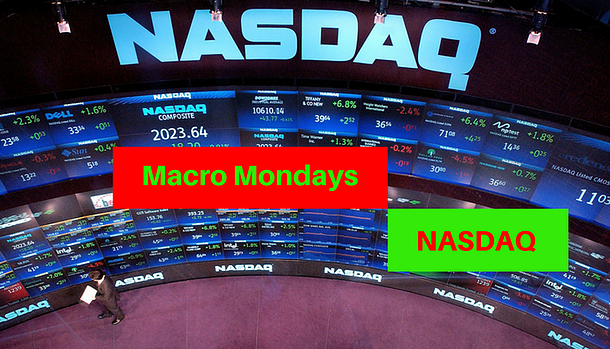
Welcome to another edition of Macro Mondays! I hope you’re excited as I am to talk about one of the most well-known US indices – the Nasdaq! You hear a lot about the Nasdaq in the news, and many people assume that the index is nothing but high-growth technology companies, but that isn’t the case.
Think you know about the NASDAQ? Well, you might not know ‘JAQ’ (get it?)
To learn more about the Nasdaq and its composite index, check out Investopedia!
What is the ‘Nasdaq’?
A global electronic marketplace for buying and selling securities, as well as the benchmark index for U.S. technology stocks. Nasdaq was created by the National Association of Securities Dealers (NASD) to enable investors to trade securities on a computerized, speedy and transparent system, and commenced operations on February 8, 1971. The term “Nasdaq” is also used to refer to the Nasdaq Composite, an index of more than 3,000 stocks listed on the Nasdaq exchange that includes the world’s foremost technology and biotech giants such as Apple, Google, Microsoft, Oracle, Amazon, Intel, and Amgen.
What is the history of ‘NASDAQ’?
Nasdaq officially separated from the NASD and began to operate as a national securities exchange in 2006. In 2007, it combined with the Scandinavian exchange group OMX to become the Nasdaq OMX Group, which is the largest exchange company globally, powering 1 in 10 of the world’s securities transactions. Headquartered in New York, Nasdaq OMX operates 26 markets – primarily equities, and also including options, fixed income, derivatives, and commodities – as well as three clearinghouses and five central securities depositories in the U.S. and Europe. Its cutting-edge trading technology is used by 70 exchanges in 50 countries. It is listed on the Nasdaq under the symbol NDAQ and has been part of the S&P 500 since 2008.
The Nasdaq computerized trading system was initially devised as an alternative to the inefficient “specialist” system, which had been the prevalent model for almost a century. The rapid evolution of technology has made the Nasdaq’s electronic trading model the standard for markets worldwide.









Leave A Comment